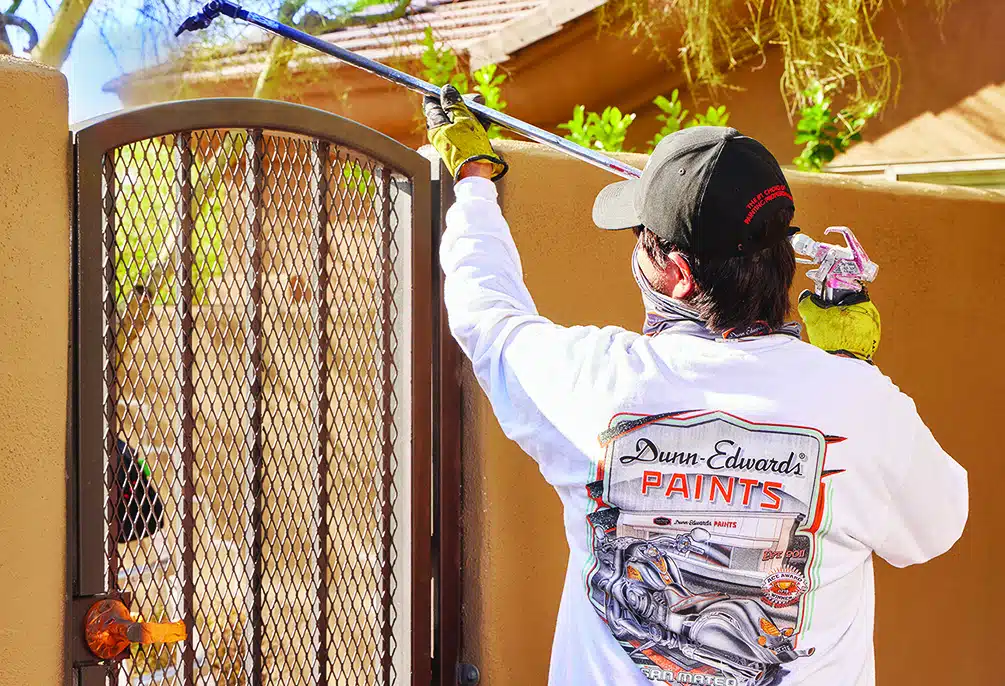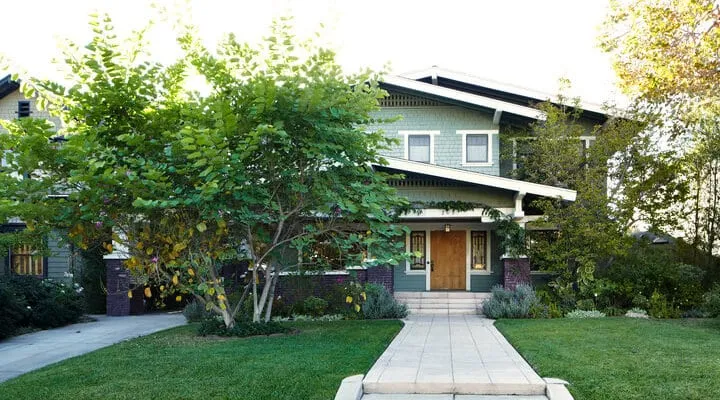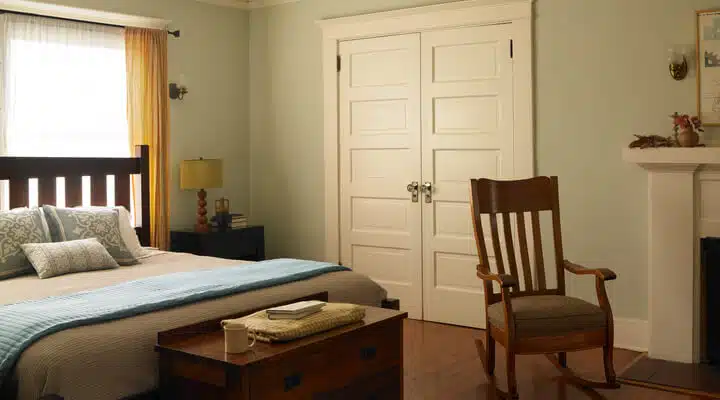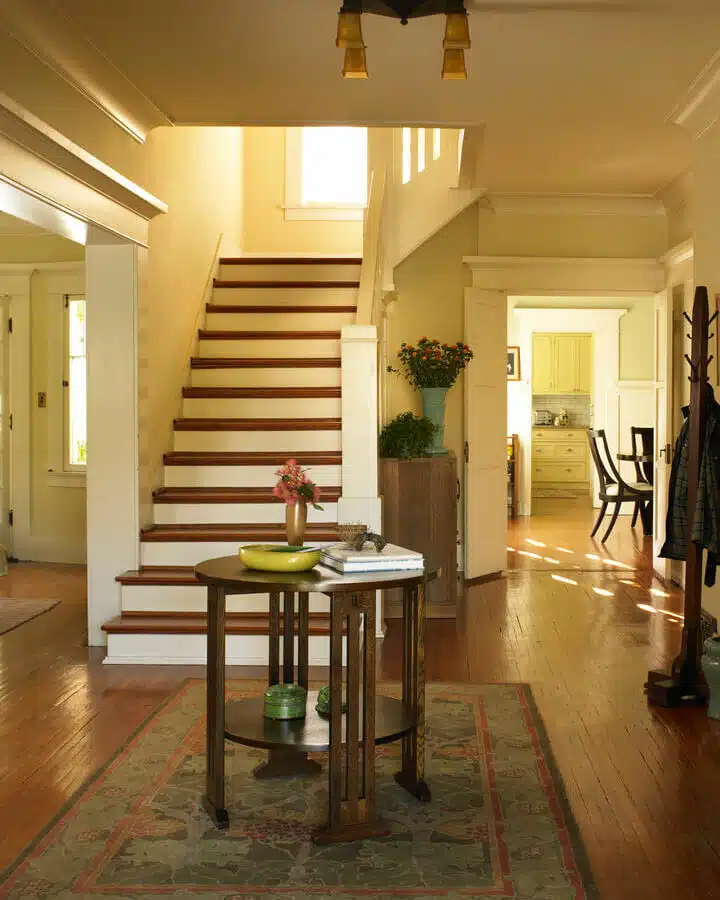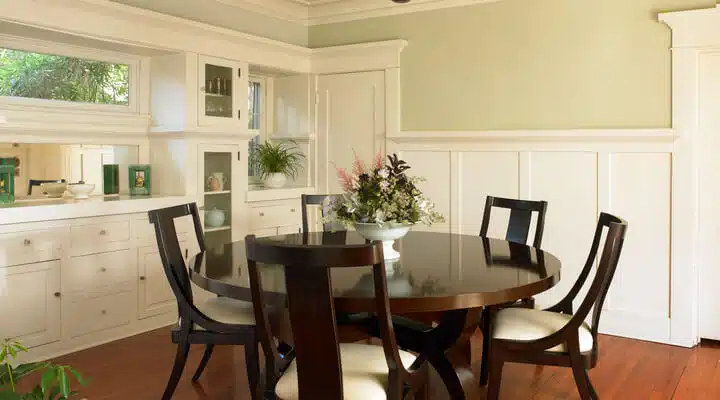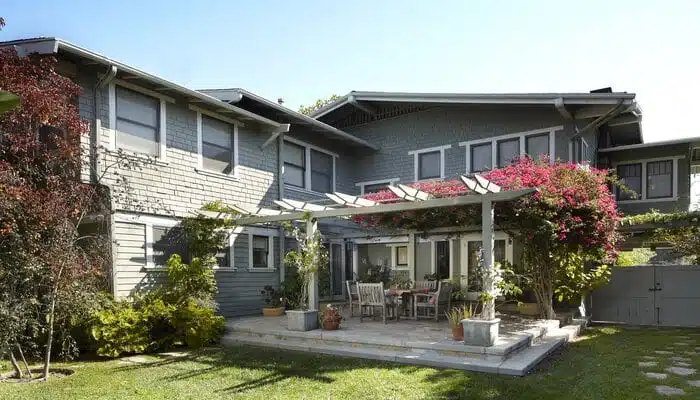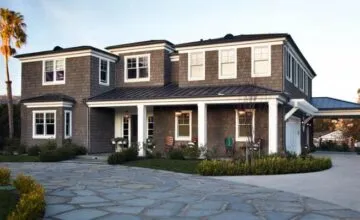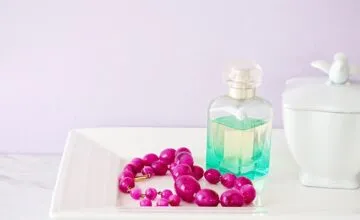Craftsman Exterior Paint Colors
08/04/2013 | Sara McLean |
Craftsman-style architecture in the United States dates back to the early 1900s and came about as an outgrowth of the English Arts and Crafts movement. Stressing the importance of simplicity, function and craftsmanship as well as blending into the natural landscape surrounding the building, the Craftsman home became the embodiment of a new of architecture, eschewing the Victorian Era architecture and machine-made production.
The name “Craftsman" derived from the title of a magazine published by furniture designer Gustav Stickley between 1901 and 1916. If a house was built using the actual plans published in Stickley's magazine, it was considered a true Craftsman home. However, other magazines, pattern books and mail-order house catalogues began publishing home plans with Craftsman-like details and soon the word “Craftsman" began to mean any home that expressed the ideals of the Arts and Crafts movement, even the ever-popular Bungalow.
Specifically, the term American Craftsman or Craftsman style are used to note the architecture, interior design and decorative arts that were widespread between the Art Nouveau and Art Deco periods, roughly 1910 to 1925.
Typical Craftsman Style Features
The design elements of today's Craftsman style homes blend influences of the Arts and Crafts movement as well as Mission, Prairie and California Bungalow styles of homebuilding. Some Craftsman style homes even have Asian- or Swiss-inspired influences.
Common characteristics include:
- Wood, stone or stucco siding
- Historic building materials include clapboard, shingle, stone, brick and clinker brick
- Low-pitched roofline
- Wide eaves with triangular brackets
- Exposed roof rafters
- Porches with thick square or round columns
- Stone porch supports
- Exterior chimneys made of stone
- Open floor plans, few hallways
- Numerous windows, some with stained or leaded glass
- Beamed ceilings
- Dark wood wainscot and moldings
- Built-in cabinets, shelves and seating
Examples of Historic Craftsman architecture include:
-
- The Gamble House by Greene & Greene Architecture, 1908, Pasadena, CA
- Frederick C Grable House, Frederick C Grable and Clarence Austin, 1907, Pasadena, CA
Painting Tips for Craftsman-style Homes
- The autumn color palette was extremely popular as a source of color inspiration for Arts and Crafts era homes as this was keeping in line with the Arts & Crafts philosophy on color use.
- What color is the roof? Typical Craftsman roof colors are natural brown, green and red.
- With a brown roof, ideas for traditional body colors are olive, dark green and russet or the lighter bungalow colors of the 1920s such as yellow, orange and sage green.
- With a green roof, work with brown, yellow and red body colors, both light and dark.
- With a red roof, consider browns, greens, yellows, tans and olives as well as blue-greens, grays and whites.
- Accent and trim colors
- Most Craftsman-style homes have little architectural detail
- A typical building in the Arts & Crafts era had one major trim color, sometimes a minor trim color and one or two accent colors
- Try for contrast in trim color
- Using dark colors for the body and trim diminishes the overall effect. Try a medium contrast color combination, not extreme, as these homes are known for softer colors.
- Doors
- Most Craftsman-era homes have two or three doors. The main entry door or front door was often stained. Good modern choices for the front door are medium brown or another accent color in the palette. Don't paint these doors hunter green or burgundy as typical in other styles of subdivision homes, as these colors are inappropriate for the Craftsman-era front door.
- Windows
- Generally, the window sash has been painted differently than the window trim.
- Eaves
- Most Craftsman-style eaves were painted the trim color to help outline the building.
- Front porches
- The porch typically has its colors pulled from the rest of the overall color scheme.
- Columns are often painted a lighter tone.
- Railings and spindles can either be painted in a single color, the trim color or two colors. When painting with two colors, the railings are typically painted the darker color.
- Ceilings are painted off-white to reflect the light downward, or finished in the darker paint color or stain.
- Floors on porches are typically painted in dark grays, reds, browns and greens.
- The porch typically has its colors pulled from the rest of the overall color scheme.
Craftsman Color Schemes
The Craftsman-style color schemes are based on nature and the surrounding environment. Many of the color cues are taken from fall foliage and landscapes, creating lush and saturated, yet natural color schemes for the home. Here are eight Craftsman-inspired color schemes in order of body color, trim, window sash and accents.
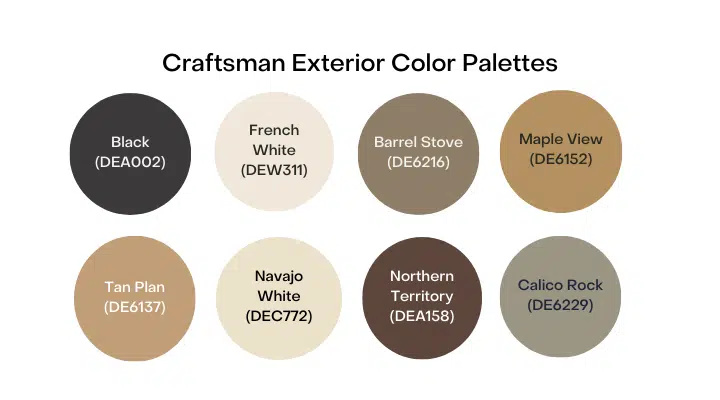
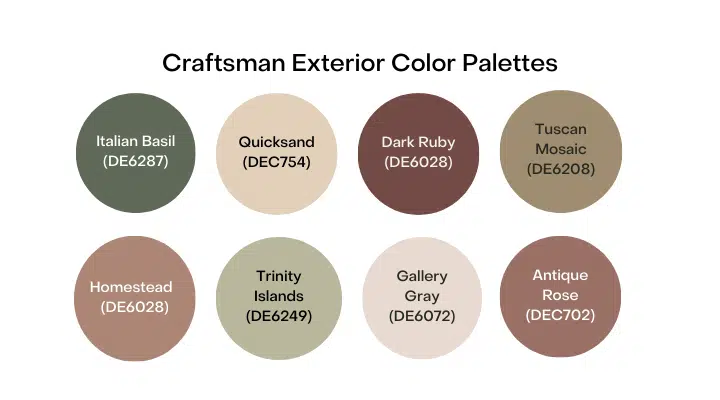
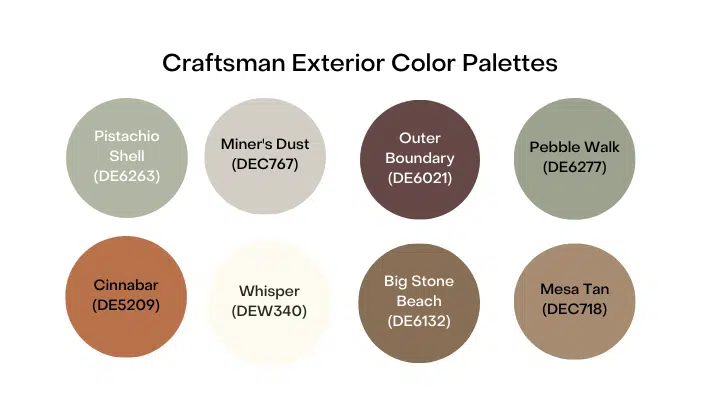
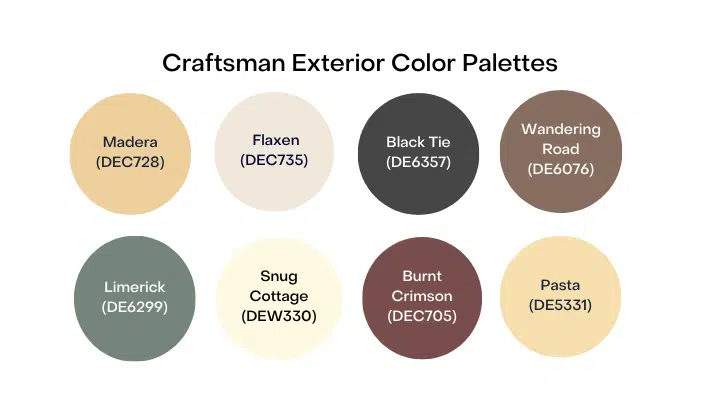
All images by Dunn-Edwards and Getty Images






